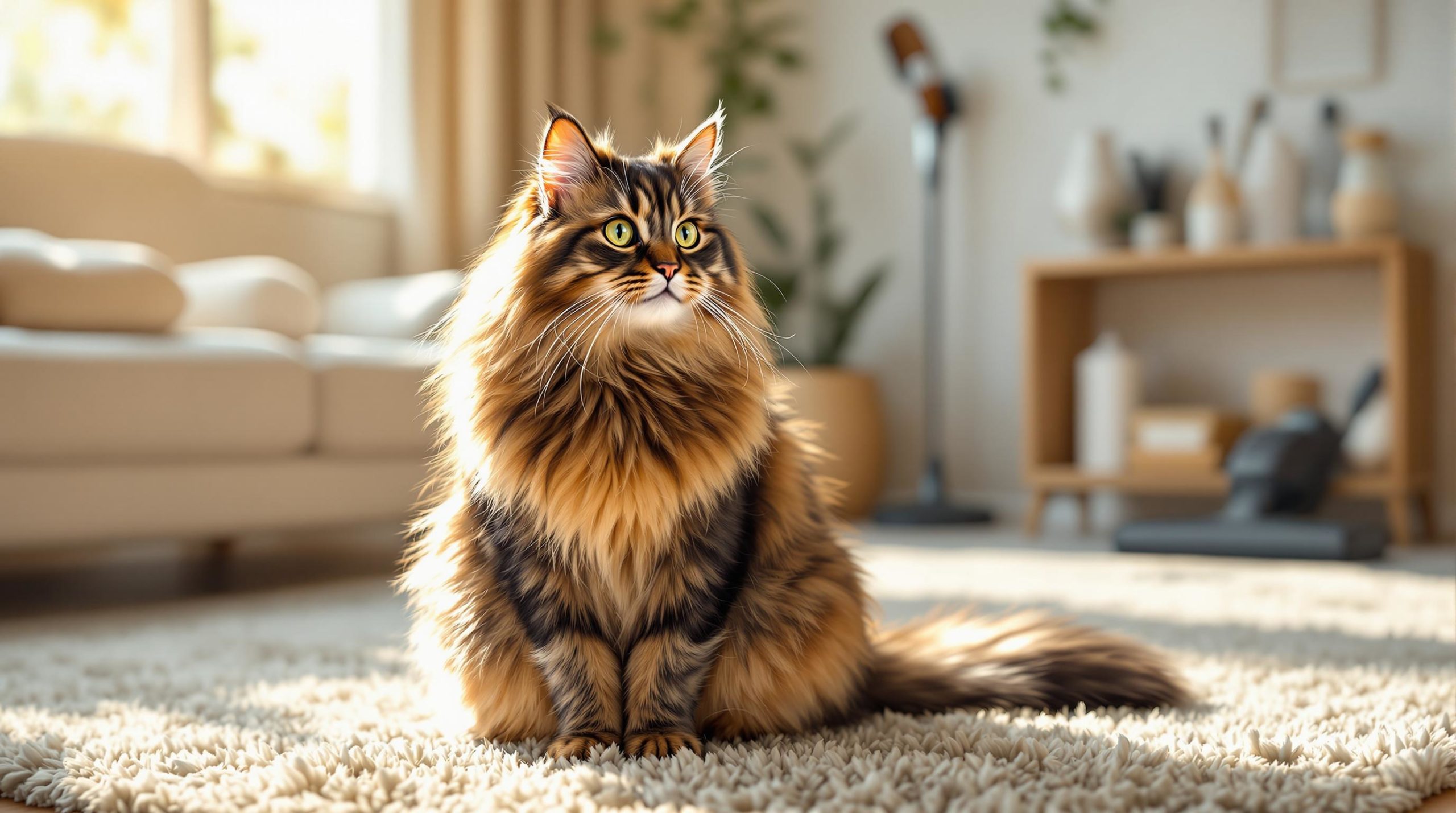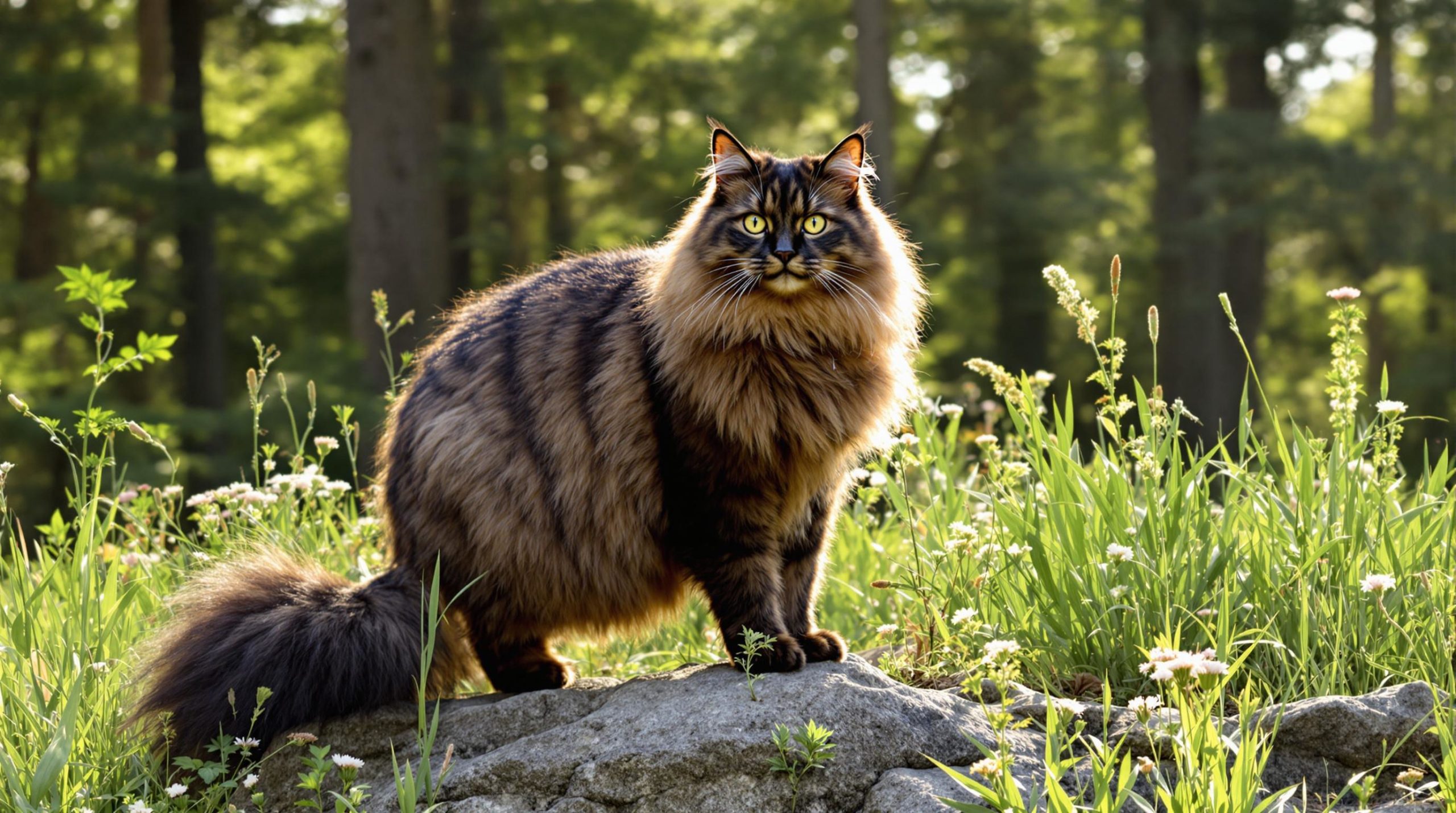Understanding Maine Coon shedding: tips for managing and minimizing fur loss

Encountering a Maine Coon cat often means facing an impressive coat that is as luxurious as it is voluminous. These gentle giants, known for their sociable demeanor and striking fur, inevitably raise one common question among both future owners and seasoned enthusiasts alike: how much do Maine Coons shed, and what can be done to manage this natural process? Understanding the distinctive nature of Maine Coon shedding is essential for anyone who wants to keep their home clean and ensure their feline companion remains comfortable and healthy. This exploration dives deep into the patterns of fur loss in Maine Coons, the biological and environmental factors influencing shedding, and effective strategies that allow cat lovers to minimize the impact of loose fur while celebrating the beauty of their majestic pets.
Decoding the Unique Shedding Cycle of Maine Coon Cats
Maine Coon cats possess one of the most remarkable coats in the feline world—a thick, layered coverage consisting of a soft downy undercoat, a middle layer of guard hairs, and longer top guard hairs. This triple-layered coat is specifically adapted for insulation, allowing these cats to thrive in colder climates. Yet this distinctive fur structure comes with a predictable shedding cycle that is more pronounced than that in many other breeds.
Seasonal shedding is the hallmark of a Maine Coon’s fur maintenance. Typically, there are two peaks: a spring molt when they shed their heavy winter coat to stay cool during warmer months, and a fall shedding as they prepare to grow a thick layer for winter insulation. Beyond seasonal patterns, Maine Coons experience year-round low-level fur loss which ensures constant renewal and maintenance of their rich coats.
Key characteristics of Maine Coon shedding
- Layered coat structure: The undercoat and guard hairs have different lifespans, with the undercoat shedding more vigorously in seasonal transitions.
- Shedding volume: Maine Coons can shed around 20 to 30 grams of fur weekly, a quantity that some studies equate to about a handful of cotton balls.
- Environment influence: Indoor Maine Coons may experience less dramatic seasonal shedding due to controlled indoor climates, yet they still shed moderately year-round.
For potential and current Maine Coon owners, knowing these facts supports more effective care and grooming—vital for reducing the footprint fur leaves around the household.

| Shedding Phase | Volume of Fur Lost | Duration | Environmental Impact |
|---|---|---|---|
| Spring Shedding | High (up to 50% increase) | 4-6 weeks | Triggered by rising temperatures; removal of winter coat |
| Fall Shedding | Moderate to High | 4-6 weeks | Fur thickening for winter insulation |
| Year-Round Shedding | Low to Moderate | Continuous | Steady renewal influenced by indoor temperature and light exposure |
Practical Grooming Techniques to Tackle Shedding in Maine Coons
Maintaining a pristine, tangle-free coat on a Maine Coon requires dedication and the right tools. Because these cats have such dense undercoats, regular grooming sessions not only reduce the amount of loose fur around the home but also provide important skin stimulation and bonding time.
Essential grooming tools and their uses
- Furminator deShedding Tool: Renowned for its efficiency in extracting loose undercoat without harming the top hair layer; best used once or twice a week.
- PetFusion Slicker Brush: Ideal for removing tangles and fluff while distributing natural oils for fur health.
- Burt’s Bees Cat Shampoo: Mild cleansing with natural ingredients to prevent skin dryness during periodic baths.
- Bissell pet vacuum: To clean up hair after grooming and throughout the house, particularly effective with special pet hair attachments.
- ChomChom Roller: A reusable tool perfect for quick removal of fur from clothing and upholstery.
Experts recommend brushing a Maine Coon at least two to three times a week, increasing to daily during heavy shedding seasons. Combining brushing with occasional baths using a gentle shampoo like Earth Rated or Burt’s Bees can maintain coat cleanliness and skin hydration. Dryer settings on low or cool help prevent fur damage during drying phases.
Establishing a regular grooming routine not only minimizes shedding but reduces the risk of painful mats and hairballs that can arise from neglected coats. Daily patience can transform shedding chaos into a soothing ritual for both pet and owner.
| Grooming Activity | Frequency | Recommended Tool/Product | Benefit |
|---|---|---|---|
| Brushing | 2-3 times weekly; daily in spring/fall | Furminator, PetFusion Slicker Brush | Removes loose fur and prevents mats |
| Bathing | Every 6-8 weeks | Burt’s Bees or Earth Rated Shampoo | Keeps skin and fur clean and moisturized |
| Vacuuming/Fur removal | Daily during shedding season | Bissell vacuum, ChomChom Roller | Maintains clean environment; reduces allergens |
Optimizing Nutrition and Environment to Sustain a Healthy Maine Coon Coat
The condition of a Maine Coon’s fur is a mirror reflecting its overall health, largely influenced by diet and living conditions. Providing a nutrient-rich diet and maintaining an optimal home environment effectively decreases excessive shedding and supports fur vitality.
Critical dietary components for fur health
- High-quality protein sources: Foods with at least 30% animal protein — chicken, turkey, or salmon serve well.
- Essential fatty acids: Omega-3 and omega-6 fatty acids, commonly found in fish oil supplements, facilitate a shiny, resilient coat and reduce shedding by upwards of 38% according to recent studies.
- Hydration: Proper water intake nurtures skin health, where gadgets such as PetSafe drinking fountains encourage cats to drink more.
- Supplements: Incorporation of supplements approved by veterinarians can provide additional nutrients promoting skin and fur quality.
Equally important is the environment in which the Maine Coon lives. Controlled indoor temperatures eliminate extreme seasonal stress on their coat, minimizing hair blowouts. Humidity levels contribute to skin moisture, while providing warm, comfortable resting spots can reduce stress-related shedding.
Environmental toxins and allergens should be minimized. Using products such as Earth Rated cleaning items and PetSafe air purifiers can effectively cut down on irritants in the home, safeguarding your cat’s skin integrity and reducing fur loss.
| Factor | Recommended Approach | Effect on Shedding |
|---|---|---|
| Protein Quality | Feed food with >30% high-grade animal protein | Supports new hair growth and fur strength |
| Fatty Acids | Supplement with fish oil rich in omega-3 and omega-6 | Reduces shedding, promotes glossy coat |
| Hydration | Provide accessible fresh water, use PetSafe fountains | Maintains skin moisture, minimizes dryness |
| Environment | Maintain steady indoor temperature and humidity | Stabilizes shedding cycles, reduces stress shed |
| Cleanliness | Use Earth Rated cleaning products and filter air | Limits skin irritants, decreases fur loss |
Tools and Techniques for Managing Shedding Inside the Home
Shedding management extends beyond the grooming table; keeping a clean home environment is equally central to controlling fur spread and allergen buildup. Maine Coons’ thick coats mean you’ll often find clumps of fur on furniture and clothes, but smart cleaning strategies and tools can make a significant difference.
Recommended cleaning toolkit for cat owners
- Bissell Pet Hair Vacuum: Equipped with pet hair-specific brushes and HEPA filters that capture fine allergens embedded in fur.
- ChomChom Roller: Handy reusable roller that lifts pet hair off fabric surfaces quickly without the need for sticky tape replacements.
- Microfiber cloths: Ideal for wiping furniture and other surfaces, as the fibers attract and hold onto stray hairs effectively.
- Lint rollers and brushes: Essential for clothes and upholstery to remove fur instantly before heading outdoors.
- Pet bed covers and washable blankets: Designate cozy areas with washable fabrics to limit fur on sofas and beds.
Maintaining a rigorous cleaning schedule—vacuuming multiple times per week, wiping surfaces with damp microfiber cloths, and using lint rollers on daily-wear garments—keeps fur accumulation down. Additionally, organizing cat spaces with washable items makes it easy to refresh your home’s fur-prone zones regularly.
| Cleaning Method | Frequency | Recommended Product | Purpose |
|---|---|---|---|
| Vacuuming | 2-3 times weekly during shedding season | Bissell Pet Hair Vacuum | Removes loose fur and allergens from surfaces |
| Rolling clothes/furniture | Daily | ChomChom Roller, lint rollers | Quick removal of fur from fabric |
| Surface wiping | Weekly | Microfiber cloths | Prevents buildup on flat surfaces |
| Washing bedding | Bi-weekly or as needed | Machine washable pet blankets | Reduces fur accumulation in pet rest zones |
Recognizing Health-Related Causes of Excessive Shedding in Maine Coons
While regular shedding is natural, it’s equally important to recognize when shedding patterns signal health issues. Excessive fur loss or patchy baldness can be indicative of underlying medical or environmental problems requiring veterinary attention.
Common health triggers of abnormal shedding include:
- Allergies: Environmental or food allergens may cause itching and subsequent fur loss, often around paws or the neck.
- Parasites: Fleas and ticks prompt intense scratching and hair loss; signs include red skin and sores in problem areas.
- Skin infections: Fungal infections such as ringworm lead to circular patches of fur loss and scaling skin surfaces.
- Hormonal imbalances: Conditions like hyperthyroidism can cause sudden weight loss and dull coats along with increased shedding.
- Stress and anxiety: Changes in environment or routine may result in over-grooming or fur pulling.
Monitoring your Maine Coon’s fur and skin, particularly during shedding peaks, helps identify abnormalities early. Should symptoms like bald patches, dry or inflamed skin, or noticeable behavioral changes occur, prompt consultation with a veterinarian is crucial. For comprehensive information on common health concerns, including those related to fur and skin, visit this trusted resource.
| Symptom | Potential Cause | Recommended Action |
|---|---|---|
| Bald spots or patchy fur | Parasites, fungal infection, allergies | Veterinary examination, topical or systemic treatment |
| Excessive scratching or licking | Skin irritation, allergy, fleas | Medicated baths, flea treatment, allergy management |
| Dull or brittle coat | Poor diet, hormonal issues | Dietary adjustment, blood tests and hormonal therapy |
| Weight loss with shedding | Hyperthyroidism | Comprehensive vet assessment and treatment |
Frequently Asked Questions About Maine Coon Shedding
- Q: How much fur should I expect to clean daily?
A: On average, a Maine Coon sheds about 20 to 30 grams weekly, which may translate to one to two tablespoons of hair daily around your home. - Q: Can I completely stop my Maine Coon from shedding?
A: Shedding is a natural process of fur renewal and cannot be entirely stopped, but proper grooming and nutrition can reduce it significantly, up to 70% in some cases. - Q: Do Maine Coons shed more than dogs?
A: Compared to breeds like the Golden Retriever, which loses about 65 grams of fur per week, Maine Coons shed approximately half as much despite their thick coats. - Q: Is there a specific time when shedding is at its worst?
A: Yes, spring is typically the heaviest shedding period as Maine Coons remove their winter coat, with shedding peaking around April and May. - Q: Are there Maine Coon cats that shed less?
A: Some individual variations exist. Cats from European lines with denser undercoats tend to shed more, whereas American lines usually have lighter undercoats and less fur loss.
For deeper insights into grooming and allergy management, readers may find articles such as grooming essentials and allergy mitigation solutions invaluable, ensuring the well-being of both cat and owner. Additionally, understanding the long-term investment of Maine Coons, including grooming and health maintenance costs, can be explored at this detailed guide on Maine Coon ownership.